Bringing the string back around itself, I fold it over to lock it in place"
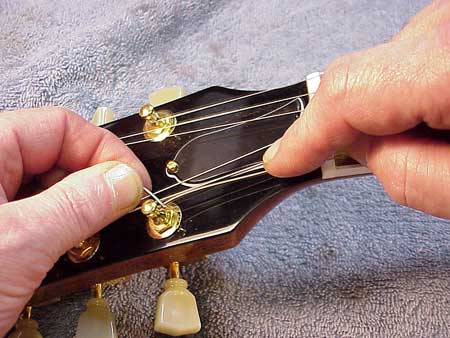
Now, as I start to wind it up, the string pins the free end against the tuner post:
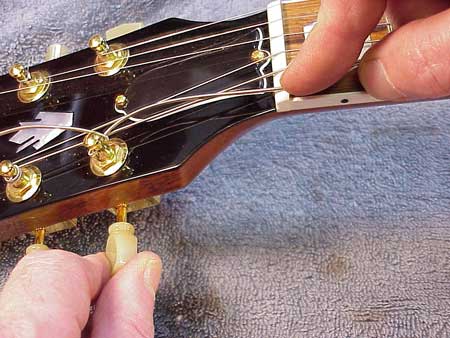
Once it's up to tension, I can cut the excess off, right against the tuner:
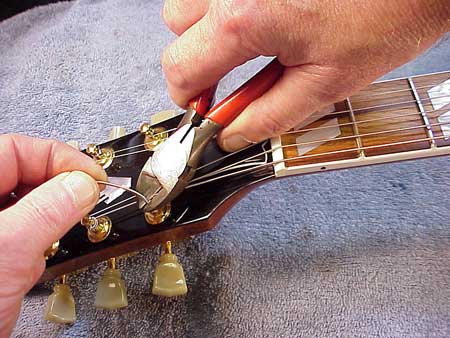
The result is neat and trim, and best of all, it's positively not going to slip:
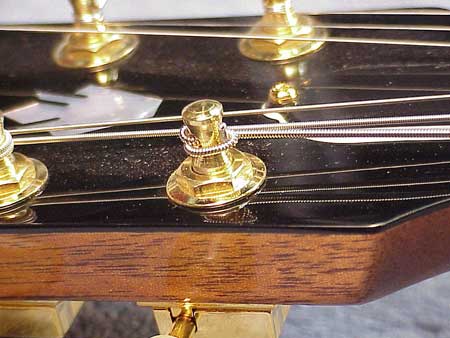
It's usually easiest to change the strings one at a time, so the bridge will stay in position on the top of the guitar. There's no harm in taking them all off at once, and I like to do that from time to time so I can give the fingerboard and top a good cleaning.
Either way, it's necessary to check the bridge position to assure the best intonation.
I'll play the harmonic over the twelfth fret and compare it to the fretted note at the twelfth:
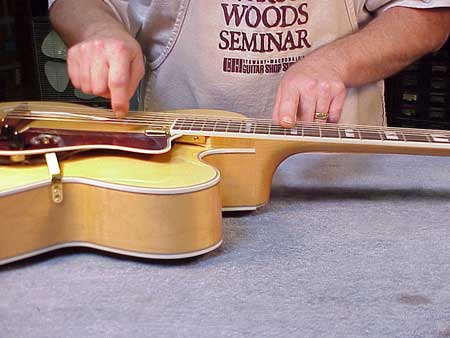
If the fretted note is sharp in comparison, I'll move the bridge toward the tailpiece to lengthen the vibrating string. If the fretted note appears flat, I'll move the bridge toward the neck to shorten the effective string length:

Repeating the process with the other strings, I'll find the best compromise location for the bridge.